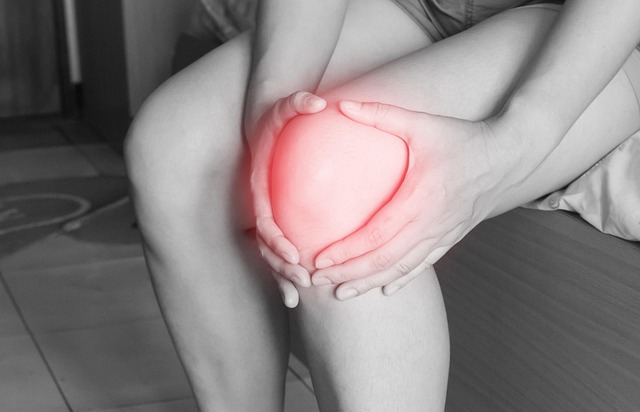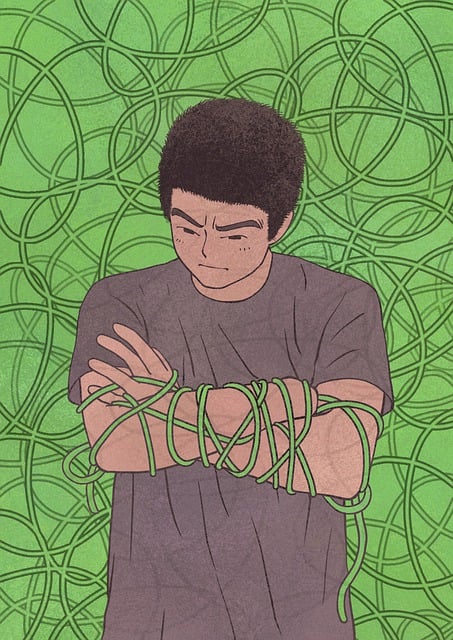Chronic pain, lasting over three months, significantly impacts quality of life through prolonged stress response activation. Acupuncture, an ancient Chinese medicine practice targeting specific body points (meridians) with thin needles, reduces inflammation, blocks pain signals, and stimulates natural healing, offering drug-free relief for conditions like back pain, neck pain, sciatica, and migraines, enhancing mobility, sleep, mood, and overall well-being. Choosing a qualified chronic pain acupuncture practitioner is crucial for positive outcomes.
Tired of managing chronic pain with medication? Discover the ancient art of acupuncture—a drug-free alternative gaining popularity for its effectiveness in alleviating back, neck, and other chronic pain conditions. This comprehensive guide explores how chronic pain impacts your life, delves into the science behind acupuncture, explains its mechanism for pain relief, highlights its benefits, ensures safety and effectiveness, and provides tips for choosing a qualified acupuncturist. Embrace a natural path to wellness with acupuncture.
- Understanding Chronic Pain and Its Impact
- Exploring Acupuncture: An Ancient Remedy
- How Acupuncture Works for Pain Relief
- Benefits of Acupuncture for Back and Neck Pain
- Safety and Effectiveness: What to Expect
- Finding the Right Acupuncturist for You
Understanding Chronic Pain and Its Impact

Chronic pain is a complex and persistent condition that significantly impacts an individual’s quality of life. It is characterized by prolonged discomfort, often lasting longer than 3 to 6 months, and can arise from various sources such as injuries, surgeries, or underlying medical conditions. This type of pain is unique because it activates the body’s stress response, leading to physical and emotional strain. Over time, chronic pain can result in reduced mobility, sleep disturbances, mood changes, and even increased sensitivity to pain (allodynia).
Understanding chronic pain is crucial for developing effective treatment strategies. Many individuals turn to acupuncture as a drug-free alternative to manage this condition. Acupuncture has gained recognition for its potential in treating various types of pain, including back pain, neck pain, and sciatica. By targeting specific points on the body, it aims to reduce inflammation, block pain signals, and promote natural healing processes. As an added benefit, acupuncture offers a non-opioid pain relief method, providing patients with an alternative to prescription medications or surgical interventions for managing chronic pain.
Exploring Acupuncture: An Ancient Remedy

Acupuncture, an ancient practice with roots tracing back thousands of years, has emerged as a popular alternative for individuals seeking effective yet drug-free solutions to chronic pain. This traditional Chinese medicine technique involves inserting thin needles into specific points on the body to stimulate natural healing processes and promote balance within the body’s energy systems.
For those suffering from conditions like back pain, neck pain, sciatica, or joint pain, acupuncture offers a promising avenue for relief without relying on opioids or other medications. As a non-opioid pain relief method, it provides a gentle yet powerful approach to managing chronic pain, making it an increasingly sought-after therapy in today’s world where people are constantly looking for natural remedies and alternatives to conventional treatments.
How Acupuncture Works for Pain Relief

Acupuncture for pain relief works by stimulating specific points on the body, typically using thin needles inserted into these targeted areas. These points are connected to pathways known as meridians, which are believed to carry energy or “qi” throughout the body. By activating these meridians, acupuncture helps to restore balance and promote natural healing processes. This treatment approach not only blocks pain signals from reaching the brain but also addresses the underlying causes of chronic pain, such as inflammation and joint stiffness.
For individuals seeking drug-free alternatives for conditions like back pain, neck pain, and migraine headaches, acupuncture offers a safe and effective solution. The practice has been shown to reduce inflammation treatment and provide lasting relief without the side effects often associated with prescription medications. Whether it’s for managing chronic pain or providing joint pain therapy, many patients report significant improvements in mobility and overall well-being after regular acupuncture sessions.
Benefits of Acupuncture for Back and Neck Pain

Acupuncture has emerged as a powerful tool for individuals seeking effective yet drug-free solutions to manage chronic pain associated with back and neck conditions. This ancient practice involves inserting thin needles at specific points on the body, known as acupuncture points, to stimulate the natural healing processes. One of its key advantages is its ability to provide relief from sciatica, a common source of leg and back pain, by targeting areas related to inflammation treatment.
By manipulating these energy pathways, acupuncture can offer significant benefits for patients struggling with neck stiffness, headaches, and other musculoskeletal issues. It serves as an excellent alternative to non-opioid pain relief methods, helping individuals avoid the potential risks and side effects associated with long-term use of prescription medications. Many patients report reduced pain levels, improved mobility, and a heightened sense of well-being after regular acupuncture sessions tailored to their specific needs.
Safety and Effectiveness: What to Expect

Acupuncture for chronic pain relief has gained significant traction as a safe and effective alternative to pharmaceutical interventions. When practiced by a qualified professional, it offers a natural approach to managing various types of persistent pain, including back, neck, and even migraine headaches. The beauty of acupuncture lies in its ability to target specific areas without the potential side effects associated with medications.
Many patients report positive outcomes from regular acupuncture sessions, which can help reduce inflammation and alleviate discomfort. For conditions like sciatica, where inflammation plays a significant role, sciatica acupuncture has shown promising results. By stimulating specific points on the body, acupuncturists can help restore balance, improve circulation, and promote the body’s natural healing mechanisms, effectively addressing the root causes of pain rather than merely masking symptoms.
Finding the Right Acupuncturist for You

When considering chronic pain acupuncture as a treatment option, finding the right practitioner is paramount to your success. It’s essential to look for a qualified and experienced acupuncturist who specialises in treating chronic pain conditions like back pain, neck pain, and joint pain therapy. Ask about their training, certifications, and how long they’ve been practicing. A good acupuncturist should be able to explain the process clearly and answer any questions you have.
Additionally, consider personal recommendations from friends or family members who have had positive experiences with acupuncture for inflammation treatment or migraine acupuncture. Reviews and testimonials can also provide valuable insights into a practitioner’s skills and bedside manner. Remember, the right acupuncturist should make you feel comfortable, respected, and empowered in your journey towards pain relief without relying on drugs.
